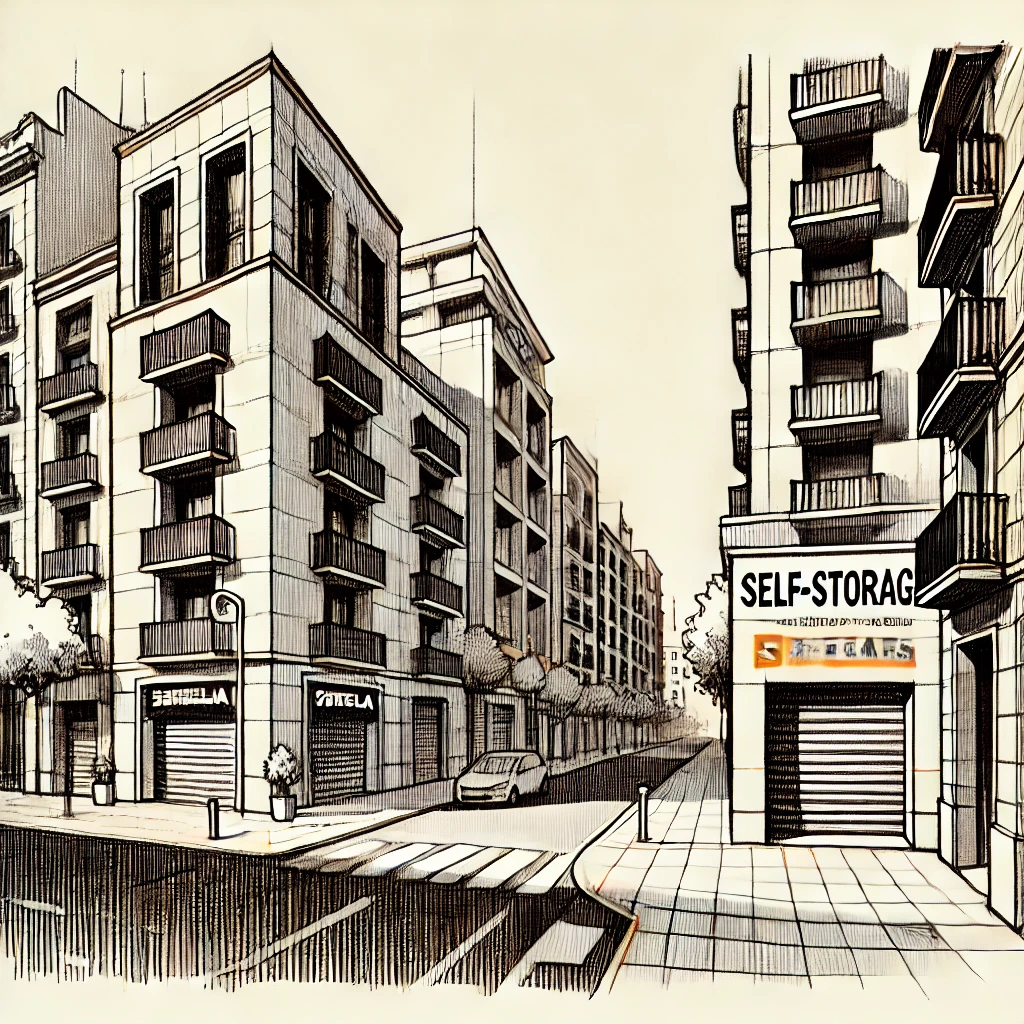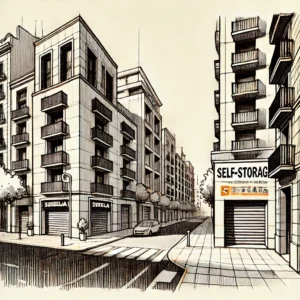Emerging Trends in Spain’s Self-Storage Boom

Spain’s self-storage market, now the fourth largest in Europe by number of facilities, is at a pivotal moment. The longstanding preference for sprawling complexes on the city outskirts is colliding with a burgeoning trend toward smaller sites in busy urban neighborhoods. The result is a dynamic debate about which approach—city-center or suburban—offers the best return on investment, the greatest convenience for customers, and the most room to grow. Below, we take a comprehensive look at both strategies, explore the benefits of a hybrid model, and discuss the forces shaping the country’s self-storage industry.
Rising Demand, Shrinking Space
One of the strongest drivers of this market is everyday life events. Moving homes, undergoing renovations, or welcoming new family members—these transitions require temporary (and sometimes longer-term) storage solutions. In cities like Madrid, Barcelona, and Valencia, where apartments tend to be on the smaller side, residents often have nowhere to stash extra items. Self-storage fills that gap, relieving the pressures of cramped living conditions.
In addition to these life events, population density plays a crucial role. Although Spain might appear sparsely populated from a broad perspective, one study suggests that only about 13% of the country’s total landmass is actively inhabited¹. This concentration of people in limited urban areas, coupled with the prevalence of multi-story buildings, underscores the challenge of finding sufficient space for belongings. Even anecdotal indicators—like Spain’s exceptionally high number of elevators—speak to the vertical nature of its housing².
City-Center Sites: High Convenience, High Returns

As the urban population swells, so does interest in smaller storage facilities near the city center. Because these sites often occupy premium real estate, costs can range from around €800 up to €2,000 per square meter. However, they can usually charge higher rents—around €35 per square meter—justified by sheer convenience and quick accessibility.
Operators who specialize in these central locations benefit from faster deployment: renovating a single floor or basement is typically quicker than building a large warehouse from scratch. With immediate demand from city dwellers, occupancy can climb rapidly. Yet this model has its downsides. Acquiring multiple small properties, each with its own permit requirements, can become a logistical puzzle for investors with substantial funds to deploy. Moreover, the more sites an operator runs, the higher the operational complexity—requiring robust systems for remote monitoring, security, and customer service.
Suburban Sites: Scale, Stability, and Strong Cash Flow

On the other end of the spectrum are expansive suburban self-storage facilities. These typically occupy 3,000 to 5,000 square meters or more and are located in industrial or commercial zones outside city centers. Real estate in these zones tends to range between €500 and €1,000 per square meter—significantly less than prime urban land—and once stabilized, these large facilities can become strong cash generators. Although the average rent hovers around €23 per square meter for a typical 6 m² unit, higher occupancy and economies of scale help balance out the lower per-square-meter price.
Suburban sites often attract long-term users, including businesses needing ongoing inventory storage or families who prefer to store larger household items. The added benefit is that fewer—though bigger—facilities can be easier to manage, with consolidated staffing and security. However, the path to opening these large sites can be lengthy: permitting and construction take time, and the distance from urban areas can deter city dwellers unless they see significant cost savings.
Striking the Balance: Why a Hybrid Approach Works
For many operators and investors, the most promising path forward is a hybrid approach—combining both premium city-center locations and larger suburban warehouses. By blending these two models, operators can harness the strengths of each segment. Central sites deliver higher rent and immediate occupancy, while out-of-town facilities provide the scale, cost efficiency, and long-term steadiness that balance out market fluctuations.
A diversified portfolio also offers flexibility for future planning. Rather than committing to a single model for the long haul, a hybrid operator can adapt to market demands or emerging opportunities. Should the time come for a strategic shift—or even the possibility of an exit—holding both city-center and suburban facilities can attract multiple types of buyers, from niche urban operators to institutional investors looking for large-scale assets.
Looking Ahead: Trends Shaping Spain’s Self-Storage Future
Looking ahead, technology is set to play a pivotal role in refining and expanding self-storage options across Spain. More operators are experimenting with unmanned facility models, relying on advanced remote monitoring, digital check-in, and automated access to reduce overhead while offering round-the-clock convenience for customers. In parallel, a growing number of property owners are turning to third-party management services, enabling them to focus on acquisitions and portfolio expansion rather than day-to-day operations.
As these trends unfold, both city-center and suburban facilities will likely continue to grow in tandem, each serving distinct needs: urban sites cater to renters seeking fast, convenient access, while larger out-of-town sites appeal to businesses and families looking for scale and cost efficiency. Rather than competing outright, these models complement each other, reflecting Spain’s diverse marketplace and setting the stage for continued innovation and robust demand in the self-storage sector.
References
- University of Exeter (2019) Study on Spanish landmass and inhabited areas.
- The Guardian (2019) Report citing Spain’s elevator usage per capita.
